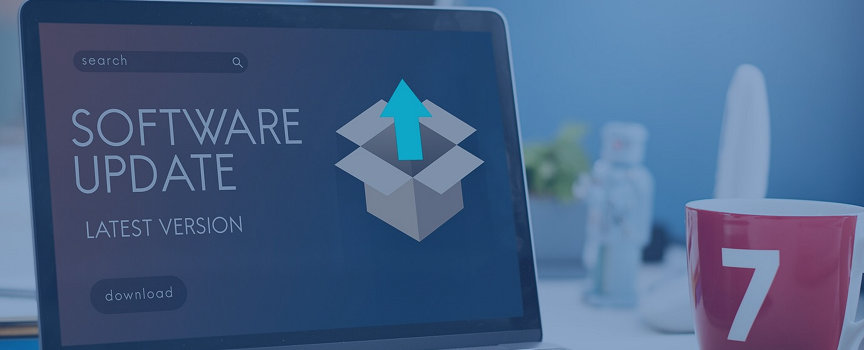Tips for Updating Website Software and Plugins

Table of Contents
Did You Know?
That 60% Of Hacked Websites Has Outdated Plugins & Software
This scary statistic shows just how important it is to keep everything up-to-date. Not only can outdated software slow your site down by up to 30%, but it can also risk your visitor’s data. To simplify this process, consider hiring a website maintenance company in Dubai. This blog post will show you how to stay on top of your website software updates and plugin maintenance to ensure the best performance, security, and user experience.
Why Updates Matter
Security Vulnerabilities
Outdated software is a hacker’s best friend. You leave your site open to attacks when you don’t perform regular website software updates. Cybercriminals often exploit known weaknesses in outdated software to gain unauthorised access. Updating your software and plugins ensures the latest security patches are installed, protecting your website from potential threats.
Performance Issues
Old software can slow your site down, frustrating your users and harming your search engine rankings. Updated software often includes performance enhancements that make your website load faster and run more efficiently. Regularly updating website software ensures that your site stays quick and responsive.
User Experience
User experience is key to keeping visitors on your site. Outdated plugins can cause compatibility issues or lead to broken features, which can frustrate your users. By performing plugin maintenance for websites, you ensure that all your site’s features work seamlessly together, providing visitors with a smooth and enjoyable experience.

Checking for Updates
The first step in updating website software is knowing when updates are available. Most content management systems (CMS) like WordPress and Joomla will notify you when updates are available. Make it a habit to log in to your CMS dashboard regularly to check for notifications.
Installing Updates
Once you know an update is available, it’s essential to install it promptly. However, always read the release notes to understand what changes are being made. This will help you prepare for any potential disruptions. Follow the steps your CMS or plugin provider provides to install updates safely.
Verifying Updates
After installing updates, it’s essential to verify that everything works correctly. Check your website’s front and back end to ensure all features and functionalities run smoothly. This step helps you catch any issues early and address them before they affect your users.

Schedule Regular Updates
Create a schedule for regular plugin maintenance for websites. Setting aside weekly or monthly time to check and install updates can help you stay on top. Consistency is crucial to ensuring your website remains secure and performs well.
Testing Updates
Before applying updates to your live site, test them in a staging environment. This allows you to identify and fix any issues without affecting your users. Many hosting providers offer staging environments as part of their services, making it easy to test updates before rolling them out. Additionally, incorporating SEO best practices during this process can enhance your site’s visibility.
Backing Up Your Website
Before performing any updates, always back up your website. If something goes wrong during the update process, you can easily restore your site to its previous state. Use reliable backup solutions that allow you to schedule automatic backups, ensuring you always have a recent copy of your site.
Also Read
- Preventing and Recovering from Website Hacks
- The Importance of Regular Website Backups
- Top 5 Website Maintenance Tips for Hospitality Websites
Tools for Managing Updates
Automated Update Tools
Several tools can help automate the update process. Services like ManageWP and InfiniteWP allow you to manage updates for multiple websites from a single dashboard. These tools can save you time and ensure you never miss an update.
Monitoring and Reporting
Monitoring tools can help you stay informed about your website’s status. Tools like UptimeRobot and Pingdom can alert you to downtime or performance issues, allowing you to address them promptly. Additionally, these tools often provide detailed reports that can help you track the effectiveness of your update strategy.
Common Mistakes to Avoid
Ignoring Update Notifications
One of the most common mistakes website owners make is ignoring update notifications. Delaying updates can leave your site vulnerable to attacks and performance issues. Make it a priority to install updates as soon as they become available.
Skipping Backup Steps
Never skip the backup step when performing updates. While updates typically go smoothly, there’s always a risk that something could go wrong. Having a recent backup ensures that you can quickly recover from any issues.
Disregarding Compatibility Checks
Always check for compatibility before installing updates. Some updates might not be compatible with your current setup, leading to conflicts and broken features. Read the release notes and perform testing in a staging environment to avoid potential problems.
Regular Website Maintenance in UAE (Software and Plugin Updates)
Regular website software updates and plugin maintenance are crucial for maintaining your site’s security, performance, and user experience. Following the best practices outlined in this blog ensures your website remains safe and efficient. Remember, staying proactive with updates protects your site and enhances your visitors’ experience.
To further simplify this process, consider using automated tools and services to help manage updates and monitor your site’s performance. By prioritising updates, you’ll be well on your way to running a successful, secure website.
